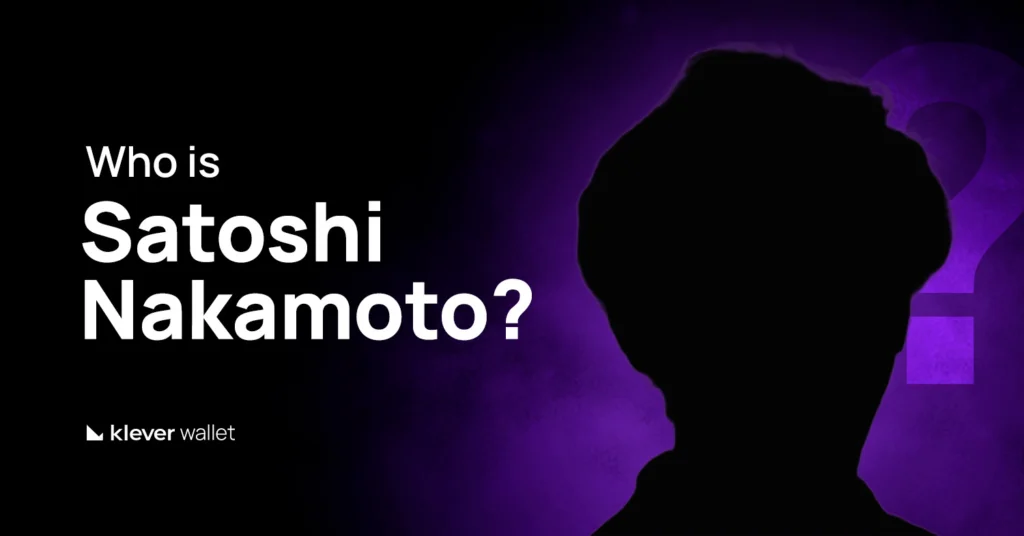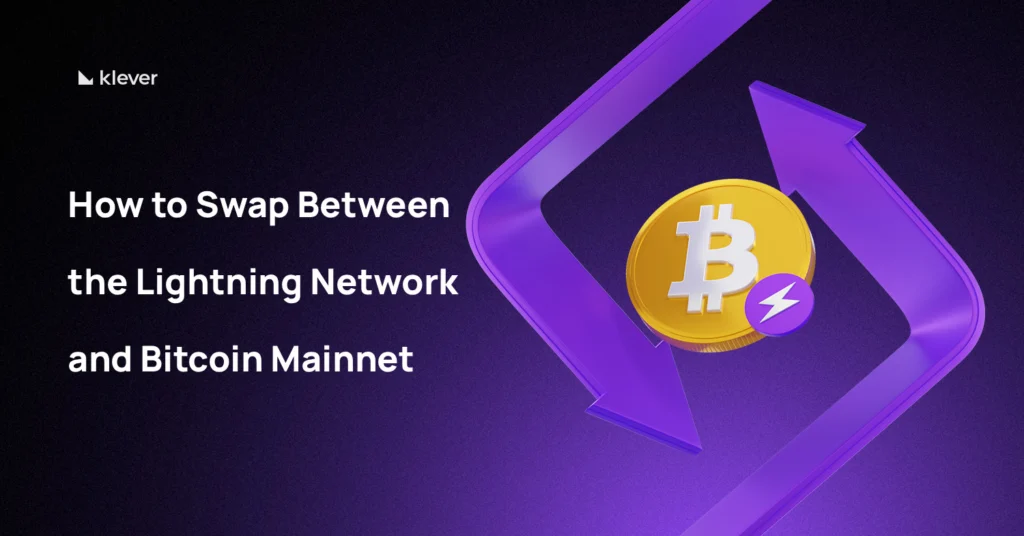
As Bitcoin continues to grow in popularity and adoption, so do the challenges surrounding its scalability and transaction costs. Originally built as a decentralized, peer-to-peer payment system, Bitcoin faces limitations in speed and efficiency—especially during periods of high demand.
To address these issues without compromising the network’s security or decentralization, developers proposed a second-layer solution: the Lightning Network.
The Bitcoin Lightning Network offers a way to send and receive Bitcoin faster and more affordably by operating on top of the existing blockchain. Through the use of off-chain payment channels, it enables real-time micro-transactions and unlocks a wide range of applications—from retail payments and gaming to streaming services and social tipping.
In this article, you’ll learn what the Bitcoin Lightning Network is, who created it, how it works, what makes it different, and how tools like Klever Wallet are making this technology more accessible to everyday users.
What is the Bitcoin Lightning Network?
The Bitcoin Lightning Network is a Layer 2 payment solution designed to operate on top of the Bitcoin blockchain. Its core purpose is to enable fast, inexpensive, and scalable payments, particularly for small, everyday transactions that would be inefficient or too costly on Bitcoin’s main chain.
At its foundation, the Lightning Network allows users to create off-chain payment channels—private, bidirectional paths where Bitcoin can be exchanged multiple times without recording every transaction on the blockchain. Only the final balance is settled on-chain when the channel is closed.
Technical Insight
Lightning leverages smart contracts, multi signature wallets, and Hash Time-Locked Contracts (HTLCs) to ensure that payments are secure, trustless, and atomic (meaning they either complete entirely or not at all).
By using routing nodes, users can send payments across the network even if they do not have a direct connection to the recipient.
The result is a network of interconnected payment channels that creates a fast and efficient value transfer system layered above Bitcoin—without altering the base protocol or sacrificing decentralization and security.
What is the Difference Between Bitcoin and Bitcoin Lightning?
Bitcoin and the Bitcoin Lightning Network work together, but they serve different purposes.
Bitcoin is the original blockchain network where every transaction is recorded directly on a public ledger.
It is extremely secure and decentralized but can sometimes be slow and expensive, especially when many people are using the network at the same time.
The Bitcoin Lightning Network was created to make Bitcoin faster and cheaper to use for everyday transactions. Instead of recording every small payment on the blockchain, Lightning allows users to open a private channel between each other.
They can send many payments instantly and only record the opening and closing of the channel on the blockchain. This makes sending small amounts of Bitcoin—like buying coffee or tipping online—much faster and more affordable.
In short, Bitcoin is the base network that keeps everything secure, while the Lightning Network is an extra layer that makes spending Bitcoin easier and quicker.
Why Was the Bitcoin Lightning Network Created?
The Lightning Network was created to solve some problems with Bitcoin, like slow transactions, high fees, and limited capacity. Bitcoin is very secure and decentralized, but it struggles to handle lots of small, everyday payments quickly and cheaply.
Slow Transaction Speed
Bitcoin blocks are produced approximately every 10 minutes. As a result, users often experience long confirmation times, particularly when the network is congested. This delay makes Bitcoin impractical for fast, everyday payments.
High Transaction Fees
During periods of high demand, transaction fees on the Bitcoin network can rise significantly. This makes it expensive to send small amounts, discouraging micro-transactions and everyday use.
Limited Throughput
Bitcoin’s base layer can process around 7 transactions per second (TPS). This limited capacity falls far short of what is needed for high-frequency or global-scale payment systems.
To overcome these challenges, the Lightning Network was introduced as a second-layer solution that operates on top of Bitcoin.
The Lightning Network enables users to open off-chain payment channels where multiple transactions can occur instantly and with minimal cost. Only the opening and closing of these channels are recorded on the blockchain.
The goal is to allow Bitcoin to function not only as a store of value but also as a scalable and efficient medium of exchange for real-world financial activity.
Key Features of the Lightning Network
Instant Payments
Lightning enables near-instant settlement of Bitcoin transactions. Payments are completed within milliseconds or seconds, removing the need to wait for block confirmations.
Low Fees
Since transactions occur off-chain, the associated costs are significantly lower than typical on-chain fees. This makes the network ideal for small payments and high-frequency transactions.
Scalability
The Bitcoin Lightning Network can handle millions of transactions per second through interconnected payment channels. This dramatically expands Bitcoin’s capacity and makes it more suitable for global usage.
Privacy
Only the opening and closing of a payment channel are recorded on the Bitcoin blockchain. Transactions that occur within the channel remain off-chain and private, enhancing user confidentiality.
Interoperability
While designed for Bitcoin, the Lightning protocol can be adapted for other blockchains that support similar scripting capabilities, offering potential for cross-chain implementation.
Practical Use Cases for Bitcoin Lightning

By enabling fast, low-cost, and scalable transactions, the Lightning Network expands Bitcoin’s utility for real-world applications, including:
- Buying coffee, groceries, or small goods
- Paying for digital subscriptions or online services
- Streaming micropayments to content creators and podcasters
- Tipping developers, writers, or influencers on social platforms
In essence, the Lightning Network transforms Bitcoin from a slow and costly settlement layer into a usable, fast, and affordable payment network, while still leveraging the trust and security of Bitcoin’s base layer.
Who Created the Bitcoin Lightning Network?
The Bitcoin Lightning Network was first introduced in 2015 by Joseph Poon and Thaddeus Dryja, who co-authored the whitepaper “The Bitcoin Lightning Network: Scalable Off-Chain Instant Payments.”
Their proposal outlined a system to enable faster, cheaper Bitcoin transactions by creating off-chain payment channels that settle periodically on the main blockchain—preserving Bitcoin’s security and decentralization.
Following the publication of the whitepaper, the idea gained traction within the Bitcoin developer community, leading to the formation of multiple teams dedicated to building and refining the Lightning Network.
These organizations, along with numerous independent developers and contributors, work collaboratively through the BOLT (Basis of Lightning Technology) specifications to maintain interoperability and decentralization across Lightning implementations.
How Bitcoin Lightning Works

Image Created with AI
Opening a Payment Channel
Two users lock Bitcoin into a multi-signature address on the blockchain. This is the only on-chain transaction required until the channel is closed.
Off-Chain Transactions
Once the channel is open, users can exchange signed transactions off-chain, instantly updating balances without requiring blockchain confirmations.
Routing Through the Network
If two users are not directly connected, payments can be routed through intermediaries via existing channels, using Hashed Time-Locked Contracts (HTLCs) to ensure security.
Closing the Channel
When users finish transacting, they close the channel and broadcast the final balance to the Bitcoin blockchain.
By moving transactions off-chain, the Lightning Network dramatically reduces congestion and accelerates payment speeds.
Ecosystem and Real-World Adoption
The Lightning Network has grown into a dynamic ecosystem of infrastructure providers, wallets, developer tools, and applications, all contributing to its expansion and real-world usability.
Key Infrastructure and Tools

- Lightning Labs – Developers of LND and tools like Loop and Pool to manage liquidity.
- Blockstream – Maintainers of Core Lightning, with a focus on modular, scalable design.
- ACINQ – Providers of Eclair and Phoenix Wallet.
- Breez – A major force in the Lightning application stack, Breez offers a non-custodial mobile wallet, podcasting integration, and point-of-sale (POS) tools. It also provides APIs and SDKs that make Lightning adoption easier for businesses and developers.
Popular Lightning Wallets
- Klever Wallet (ongoing implementation)
- Wallet of Satoshi
- Phoenix (by ACINQ)
- Muun Wallet
- BlueWallet
- Breez
Use Cases and Applications
- Retail Payments – Platforms like Strike, BTCPay Server, and OpenNode help merchants around the world accept Bitcoin via Lightning.
- Content and Streaming – Projects like Podcasting 2.0 and Zebedee facilitate real-time micropayments for podcasts, games, and digital experiences.
- Social Tipping and Tools – Services like tippin.me enable tipping through platforms such as Twitter and Telegram.
The Bitcoin Lightning Network represents a major step forward in making Bitcoin practical for everyday use.
By enabling fast, low-cost, and scalable transactions through off-chain payment channels, it addresses key limitations of the Bitcoin blockchain without compromising its core values of decentralization and security.
From buying coffee and tipping creators to building next-generation financial tools, Lightning is unlocking new possibilities for users and developers around the world.
As the ecosystem matures and more platforms like Klever Wallet integrate Lightning support, the path toward broader adoption becomes clearer.
Whether you’re a developer, a merchant, or someone looking for faster and more efficient digital payments, the Lightning Network offers a glimpse into the future of Bitcoin as both a store of value and a functional currency.
The Lightning Network is coming soon to Klever Wallet! Download the app now and be among the first to experience faster and cheaper Bitcoin transactions.
Frequently Asked Questions (FAQs)
1. What do I need to start using the Bitcoin Lightning Network?
To use the Lightning Network, you need a Lightning-compatible wallet, such as Klever Wallet, Wallet of Satoshi, Phoenix, Muun, or Breez. Some wallets manage the technical details automatically, making it easy for beginners to send and receive payments instantly.
2. Is the Bitcoin Lightning Network safe to use?
Yes, the Lightning Network is designed to be secure. It uses smart contracts and Bitcoin’s underlying security to protect transactions. However, because Lightning requires users to be online and manage channels, it’s important to use trusted wallets and stay informed about best practices, especially for larger amounts.
3. Can I send Bitcoin to any wallet using Lightning?
No. Lightning transactions can only be sent to wallets that support the Lightning Network. If the receiver is using a standard Bitcoin wallet (without Lightning), you would need to make a regular on-chain Bitcoin transaction instead.
4. Do I pay fees when using the Bitcoin Lightning Network?
Yes, but the fees are very low compared to regular Bitcoin transactions. Fees on Lightning are usually a tiny fraction of a cent, depending on the route the payment takes across the network.
5. What happens if a Lightning payment fails?
If a Lightning payment fails (for example, because there isn’t enough liquidity in the route), your Bitcoin stays safe. You can simply try again or choose a different route. Good wallets often handle this automatically in the background.
6. Is Lightning Bitcoin different from normal Bitcoin?
No. Lightning transactions use the same Bitcoin (BTC). The difference is that Lightning moves Bitcoin off-chain temporarily for faster and cheaper transfers, and only final balances are recorded back on the Bitcoin blockchain.
Be your own bank. Be Klever.




